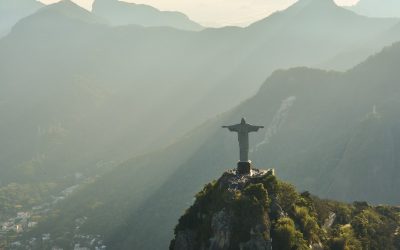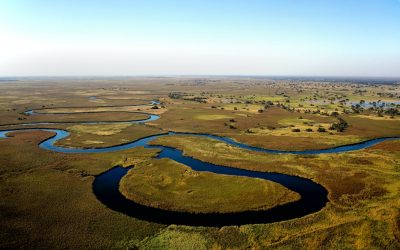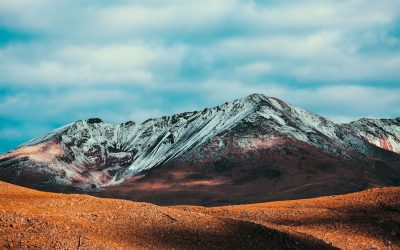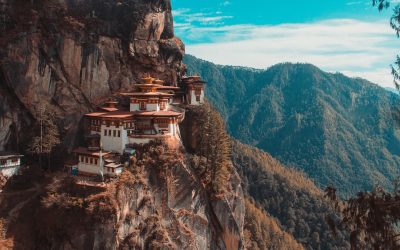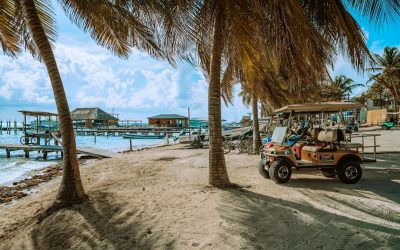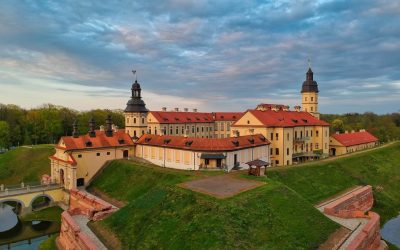World Geography
Geography is the study of the Earth’s landscapes, environments, and the relationships between people and their surroundings. It encompasses both the physical aspects of the Earth, such as its landforms, bodies of water, and climate, as well as the human aspects, including population distribution, cultures, and economies. World geography is a broad field that seeks to understand the complexities of our planet and how humans interact with it. By studying world geography, we can gain a deeper appreciation for the diversity of our planet and the interconnectedness of its various regions.
Geography is a multidisciplinary field that draws on elements of physical science, social science, and humanities. It involves the use of maps, spatial analysis, and geographic information systems (GIS) to understand the Earth’s surface and the processes that shape it. World geography also encompasses the study of human geography, which examines the ways in which people and their activities are distributed across the Earth. By understanding world geography, we can better appreciate the environmental, cultural, and economic challenges facing different regions of the world. This knowledge is crucial for addressing global issues such as climate change, resource management, and international development.
The Five Oceans and Seven Continents
The Earth’s surface is divided into five major oceans: the Pacific, Atlantic, Indian, Southern (or Antarctic), and Arctic Oceans. These vast bodies of water play a crucial role in regulating the Earth’s climate and supporting diverse marine ecosystems. The oceans also serve as important transportation routes and a source of food and other natural resources for human societies around the world.
In addition to the oceans, the Earth’s landmasses are divided into seven continents: Africa, Antarctica, Asia, Europe, North America, Australia (or Oceania), and South America. Each continent has its own unique physical and cultural characteristics, shaped by millions of years of geological processes and human history. From the deserts of Africa to the rainforests of South America, the continents offer a rich tapestry of landscapes and environments for exploration and study.
Major Mountain Ranges and Deserts
The Earth’s surface is also marked by major mountain ranges and deserts that have shaped the planet’s physical and cultural landscapes. The Himalayas, for example, are the highest mountain range in the world and are home to diverse ecosystems and cultures in countries such as India, Nepal, and Bhutan. The Andes in South America, the Rockies in North America, and the Alps in Europe are other prominent mountain ranges that have influenced human settlement patterns and economic activities.
Deserts cover about one-third of the Earth’s land surface and are characterized by low precipitation and extreme temperatures. The Sahara Desert in Africa is the largest hot desert in the world, while the Gobi Desert in Asia is one of the largest cold deserts. Deserts are not only home to unique flora and fauna but have also been important trade routes and cultural crossroads throughout history.
Climate Zones and Biomes
The Earth’s climate is influenced by a variety of factors, including latitude, altitude, ocean currents, and prevailing winds. As a result, the planet is divided into different climate zones, each with its own characteristic weather patterns and ecosystems. The equator, for example, experiences a tropical climate with high temperatures and heavy rainfall, while the polar regions have a cold and dry climate.
These climate zones give rise to different biomes, or large ecological areas characterized by distinct plant and animal communities. The tropical rainforest biome, found near the equator, is home to a diverse array of species and is vital for regulating the Earth’s climate. The grasslands biome, found in regions such as the African savannah and North American prairies, supports grazing animals and has been important for human agriculture throughout history.
Human Geography and Population Distribution
Human geography examines the ways in which people and their activities are distributed across the Earth’s surface. It encompasses topics such as population growth, migration patterns, urbanization, and cultural diversity. Understanding human geography is crucial for addressing global challenges such as poverty, inequality, and environmental degradation.
Population distribution is uneven across the world, with some regions experiencing rapid population growth while others are declining. The majority of the world’s population lives in Asia, particularly in countries such as China and India. Urban areas are also growing rapidly, with more than half of the world’s population now living in cities. This trend has significant implications for infrastructure development, resource management, and social inequality.
Historical and Cultural Geography
Historical geography examines how human activities have shaped the Earth’s landscapes over time. It explores topics such as colonialism, trade routes, and the rise and fall of empires. Cultural geography focuses on how human cultures have developed in different regions of the world and how they interact with their environments.
The Silk Road, for example, was an ancient trade route that connected China with Europe and facilitated the exchange of goods, ideas, and technologies across Eurasia. This historical trade route had a profound impact on the development of cultures and economies along its path. Similarly, cultural geographers study how different societies have adapted to their environments through practices such as agriculture, architecture, and religious beliefs.
The Importance of Geographic Knowledge
Geographic knowledge is crucial for addressing global challenges such as climate change, resource management, and international development. By understanding world geography, we can better appreciate the environmental, cultural, and economic challenges facing different regions of the world. This knowledge is crucial for addressing global issues such as climate change, resource management, and international development.
Geographic knowledge also helps us to understand our interconnectedness with other regions of the world. By studying world geography, we can gain a deeper appreciation for the diversity of our planet and the interconnectedness of its various regions. This understanding can foster a sense of global citizenship and empathy for people from different cultures and backgrounds.
In conclusion, world geography is a complex and multifaceted field that encompasses both physical and human aspects of the Earth’s landscapes. By studying world geography, we can gain a deeper appreciation for the diversity of our planet and the interconnectedness of its various regions. This knowledge is crucial for addressing global challenges such as climate change, resource management, and international development. It also helps us to understand our interconnectedness with other regions of the world and fosters a sense of global citizenship.
FAQs
What is world geography?
World geography is the study of the Earth’s landscapes, environments, and the relationships between people and their environments. It encompasses the physical features of the Earth, as well as the human activity that takes place on it.
Why is world geography important?
World geography is important because it helps us understand the world around us. It provides insights into the physical and human processes that shape our planet, and helps us make informed decisions about how to interact with our environment.
What are the main branches of world geography?
The main branches of world geography include physical geography, which focuses on the Earth’s natural features and processes, and human geography, which examines the relationships between people and their environments.
How does world geography impact our daily lives?
World geography impacts our daily lives in numerous ways, from influencing the weather and climate we experience, to shaping the availability of natural resources and influencing the distribution of populations and cultures around the world.
What are some key concepts in world geography?
Key concepts in world geography include location, place, human-environment interaction, movement, and region. These concepts help geographers understand and interpret the world around them.
Discovering the Hidden Gems of Brunei: A Journey Through Southeast Asia’s Best Kept Secret
Brunei, a small country located on the island of Borneo in Southeast Asia, is often overlooked by travelers in favor of its more popular neighbors like Malaysia and Indonesia. However, this hidden gem has much to offer visitors who are willing to venture off the beaten path. With its rich cultural heritage, stunning natural wonders, and warm hospitality, Brunei is a destination that should not be missed. Brunei’s history dates back to the 7th century when it was ruled by various indigenous tribes. In the 15th century, Brunei became a powerful sultanate and controlled much of Borneo and parts of the Philippines. Today, Brunei is a constitutional monarchy with Sultan Hassanal Bolkiah as its ruler. Despite its small size, Brunei is one of the wealthiest countries in the world due to its vast reserves of oil and natural gas. One of the reasons why Brunei is often overlooked by travelers is its lack of mass tourism infrastructure. Unlike its neighboring countries, Brunei does not have a bustling backpacker scene or an abundance of luxury resorts. However, this is part of what makes Brunei unique and worth visiting. The country offers a more authentic and untouched experience, allowing visitors to immerse themselves in its rich culture and natural beauty. Key Takeaways Brunei is a hidden gem in Southeast Asia, with rich cultural heritage and stunning natural wonders. Off-the-beaten-path adventures await in Brunei, with unique cuisine and local delicacies to indulge in. Must-see sights and experiences in Brunei include navigating bustling cities and quaint villages. The friendly people of Brunei offer a warm welcome and a chance to understand Islamic traditions...
Exploring the Vibrant Culture and Breathtaking Landscapes of Brazil
Brazil is a country known for its vibrant culture, rich history, and diverse landscapes. From the bustling streets of Rio de Janeiro to the vast Amazon Rainforest, Brazil offers a unique and unforgettable experience for travelers. In this blog post, we will take a journey through Brazil’s rich cultural heritage, exploring its history, architecture, festivals, art, cuisine, natural wonders, adventure sports, and warm hospitality. By the end of this article, you will have a deeper understanding of what makes Brazil such a fascinating and captivating destination. Key Takeaways Brazil has a rich cultural heritage that spans centuries and includes influences from indigenous tribes, European colonizers, and African slaves. Brazilian architecture is a marvel to behold, with styles ranging from colonial to modern and featuring iconic landmarks like the Christ the Redeemer statue in Rio de Janeiro. Brazilian festivals and celebrations are colorful and lively, with Carnival being the most famous and attracting millions of visitors each year. Brazil is home to a vibrant artistic scene, with music, dance, and visual arts that showcase the country’s diverse cultural influences. Brazilian cuisine is a gastronomic adventure, with dishes that range from traditional feijoada to modern fusion cuisine that incorporates local ingredients and flavors. Brazil’s Rich Cultural Heritage: A Journey Through Time Brazil’s cultural heritage is deeply rooted in its history. The country has been inhabited by indigenous tribes for thousands of years, and their influence can still be seen today. These tribes have left behind a legacy of art, music, dance, and spirituality that is an integral part of Brazilian culture. The arrival of the Portuguese in the 16th century marked...
Discovering the Untouched Beauty of Botswana: A Journey Through the Heart of Africa
Botswana, located in Southern Africa, is a hidden gem that offers travelers a unique and unforgettable experience. With its vast landscapes, diverse wildlife, and rich cultural heritage, Botswana is a destination that should be on every traveler’s bucket list. From the majestic Okavango Delta to the stunning Victoria Falls, there is something for everyone in this beautiful country. Botswana is known for its natural beauty and unique attractions. The country is home to some of the most pristine wilderness areas in Africa, making it a haven for wildlife enthusiasts and nature lovers. With its diverse ecosystems, including the Okavango Delta, the Kalahari Desert, and numerous national parks, Botswana offers a wide range of experiences for visitors. Key Takeaways Botswana is a land of untouched beauty, with vast wilderness areas and diverse wildlife. The country has a rich culture and history, with ancient rock art and traditional villages. Wildlife sanctuaries like Chobe National Park and Moremi Game Reserve offer incredible safari experiences. The Okavango Delta is a unique natural wonder, with a maze of waterways and abundant wildlife. The Kalahari Desert is a fascinating landscape, home to desert-adapted animals and the San people. The Rich Culture and History of Botswana Botswana has a rich cultural heritage that is deeply rooted in its history. The country’s past has shaped its culture and traditions, which are still observed today. The Batswana people, the largest ethnic group in Botswana, have a strong sense of community and pride in their cultural heritage. Traditional customs and practices are an integral part of everyday life in Botswana. From traditional dances and music to storytelling and crafts,...
Discovering the Hidden Gems of Bosnia and Herzegovina: A Journey Through its Rich Culture and Natural Wonders
Bosnia and Herzegovina, located in the heart of the Balkan Peninsula, is a hidden gem for travelers seeking an authentic and off-the-beaten-path experience. This small country is rich in history, culture, and natural beauty, making it a perfect destination for those looking to explore something new and unique. From its vibrant cities to its stunning landscapes, Bosnia and Herzegovina has something to offer every type of traveler. Key Takeaways Bosnia and Herzegovina is a land of hidden gems waiting to be explored. The country boasts a rich culture, fascinating history, and beautiful landscapes. Visitors can sample delicious cuisine, meet friendly people, and discover unique architecture. Adventure tourism is also a must-try in Bosnia and Herzegovina. Overall, Bosnia and Herzegovina is a must-visit destination for travelers seeking an authentic and unforgettable experience. Exploring the Rich Culture One of the highlights of visiting Bosnia and Herzegovina is immersing yourself in its rich culture. Traditional music and dance play a significant role in the country’s heritage, with performances often taking place at festivals and celebrations. These events showcase the diversity of Bosnian culture, with influences from Ottoman, Austro-Hungarian, and Slavic traditions. Handicrafts and art are also an integral part of Bosnian culture. The country is known for its intricate woodwork, pottery, and carpet weaving. Visitors can explore local markets and workshops to see these crafts being made firsthand and even purchase unique souvenirs to take home. Uncovering the Natural Wonders Bosnia and Herzegovina is blessed with an abundance of natural wonders that will leave any nature lover in awe. The country is home to several national parks and nature reserves, offering opportunities...
Discovering the Wonders of Bolivia: A Journey Through South America’s Hidden Gem
Bolivia, located in the heart of South America, is a country known for its unique and diverse landscape. From the towering peaks of the Andes Mountains to the vast expanse of the Amazon rainforest, Bolivia offers a breathtaking array of natural wonders. Its topography is incredibly varied, with high-altitude plateaus, deep canyons, and shimmering salt flats. This diverse landscape is not only visually stunning but also plays a crucial role in supporting Bolivia’s rich natural and cultural heritage. The importance of Bolivia’s natural and cultural heritage cannot be overstated. The country is home to an incredible array of plant and animal species, many of which are found nowhere else on Earth. The Amazon rainforest in Bolivia is one of the most biodiverse regions in the world, teeming with life and providing vital ecosystem services. Additionally, Bolivia is home to numerous indigenous communities that have inhabited the land for centuries, each with their own unique traditions, languages, and ways of life. Preserving this natural and cultural heritage is not only important for the people of Bolivia but also for the global community. Key Takeaways Bolivia’s diverse landscape offers unique opportunities for adventure and exploration. Indigenous culture is an integral part of Bolivia’s rich heritage and can be experienced through various cultural activities. Bolivia’s national parks and natural wonders are breathtaking and offer a chance to connect with nature. The colonial cities and towns of Bolivia are steeped in history and offer a glimpse into the country’s past. Trekking in Bolivia’s high altitude landscapes can be challenging but rewarding, offering stunning views and a sense of accomplishment. The Rich Cultural Heritage...
Discovering the Hidden Gems of Bhutan: A Journey Through the Land of the Thunder Dragon
Nestled in the eastern Himalayas, Bhutan is a small landlocked country known for its breathtaking landscapes, rich cultural heritage, and unique approach to measuring progress. Bhutan is often referred to as the Land of the Thunder Dragon due to its dramatic mountainous terrain and the powerful storms that roll through the region. This mystical and enchanting country has managed to preserve its traditional way of life and has become a beacon of sustainability and happiness. Bhutan’s history dates back to ancient times, with evidence of human settlements dating back to 2000 BC. The country remained largely isolated from the outside world until the 20th century when it began opening up to tourism. Bhutan’s culture is deeply rooted in Buddhism, which was introduced in the 7th century. Today, Buddhism plays a central role in the lives of Bhutanese people, shaping their values, traditions, and way of life. One of the most unique aspects of Bhutan is its approach to measuring progress. Instead of relying solely on economic indicators like Gross Domestic Product (GDP), Bhutan uses a holistic measure called Gross National Happiness (GNH). GNH takes into account not only economic factors but also social, cultural, and environmental aspects of well-being. This approach reflects Bhutan’s commitment to sustainable development and the well-being of its people. Key Takeaways Bhutan is known as the Land of the Thunder Dragon, a small country nestled in the Himalayas. Bhutan’s ancient Buddhist monasteries are shrouded in mystery and offer a glimpse into the country’s spiritual heritage. Bhutan’s natural landscapes are breathtaking, from snow-capped mountains to lush green valleys. Bhutanese cuisine is unique and flavorful, with dishes...
Discovering the Hidden Gems of Benin: A Journey Through West Africa’s Best-Kept Secret
Benin, located in West Africa, is a country that often goes unnoticed by travelers. However, those who do venture to this hidden gem are rewarded with a rich cultural heritage, stunning natural wonders, beautiful beaches, a thriving art scene, delicious cuisine, and vibrant markets. From the historical sites of the Kingdom of Dahomey to the spiritual shrines and festivals of the Vodun religion, Benin offers a unique and authentic travel experience. Whether you are an adventure seeker, a history buff, or a lover of art and culture, Benin has something for everyone. Key Takeaways Benin is a land of hidden gems waiting to be discovered by travelers. The country boasts a rich cultural heritage, with traditional practices and festivals still celebrated today. From the Pendjari National Park to the Tanougou Falls, Benin offers a range of natural wonders to explore. Benin’s beaches are a must-visit, with crystal-clear waters and white sand. The thriving art scene in Benin showcases the country’s creativity and talent. Uncovering the Rich Cultural Heritage of Benin One of the main reasons why Benin is worth visiting is its fascinating history and cultural heritage. The Kingdom of Dahomey, which existed from the 17th to the 19th century, was known for its powerful rulers and fierce warriors. The Royal Palaces of Abomey, a UNESCO World Heritage site, offer a glimpse into this rich history. These palaces were once the residence of the kings and queens of Dahomey and are adorned with intricate carvings and murals. Another important aspect of Beninese culture is the Vodun religion. Vodun, also known as Voodoo, is practiced by a significant portion of...
Exploring the Hidden Gems of Belize: A Journey to the Heart of Central America
Nestled on the eastern coast of Central America, Belize is a small country with a rich history and vibrant culture. Bordered by Mexico to the north and Guatemala to the west and south, Belize is known for its stunning natural landscapes, diverse wildlife, and ancient Mayan ruins. With its unique blend of indigenous and colonial influences, Belize offers travelers a truly one-of-a-kind experience. Belize has a fascinating history that dates back thousands of years. The country was once home to the ancient Mayan civilization, and remnants of their impressive architectural achievements can still be seen today. In more recent history, Belize was colonized by the British and was known as British Honduras until it gained independence in 1981. This blend of indigenous and colonial influences is evident in Belize’s culture, language, and cuisine. What sets Belize apart as a travel destination is its untouched beauty and off-the-beaten-path experiences. While neighboring countries like Mexico and Costa Rica have become popular tourist destinations, Belize remains relatively undiscovered. This means that visitors to Belize can explore pristine natural landscapes, ancient ruins, and vibrant local communities without the crowds often found in other tourist hotspots. Key Takeaways Belize is a hidden gem in Central America with a rich blend of indigenous and colonial traditions. Off the beaten path, Belize offers hidden treasures waiting to be discovered. From caves to coral reefs, Belize boasts natural wonders that are a must-see. Exploring Mayan ruins provides a window into Belize’s ancient past. Belizean cuisine is a fusion of flavors that will delight any foodie. Off the Beaten Path: Discovering Hidden Treasures in Belize One of the...
Arachnophobia Alert: The Deadly Bite of the Brazilian Wandering Spider (Phoneutria spp.)
The Brazilian Wandering Spider, also known as the banana spider or armed spider, is a highly venomous spider that is native to South and Central America. It belongs to the genus Phoneutria, which means “murderess” in Greek, and is considered one of the most dangerous spiders in the world. The spider gets its name from its wandering behavior, as it does not build a web to catch its prey like other spiders. The Brazilian Wandering Spider is known for its large size, with a leg span that can reach up to 6 inches. It has a brown or tan body with distinctive markings on its abdomen. The spider is also known for its aggressive behavior and quick movements, making it a formidable predator. Key Takeaways The Brazilian Wandering Spider is one of the most venomous spiders in the world. They can be identified by their brown or black color, hairy legs, and distinctive red or pink marking on their abdomen. The venom of the Brazilian Wandering Spider can cause muscle spasms, paralysis, and even death in severe cases. Symptoms of a bite include pain, swelling, sweating, and difficulty breathing. Treatment for a bite includes seeking immediate medical attention, administering antivenom, and managing symptoms. How to identify a Brazilian Wandering Spider The Brazilian Wandering Spider can be identified by its physical characteristics. It has a large, robust body with long legs and a distinctive pattern on its abdomen. The spider’s body is usually brown or tan in color, with darker markings that resemble a violin shape on its abdomen. One way to differentiate between male and female Brazilian Wandering Spiders...
Discovering the Best of Belgium: A Journey Through its Charming Cities and Delectable Cuisine
Belgium is a small country located in Western Europe, known for its unique culture and rich history. Despite its size, Belgium has made significant contributions to art, architecture, cuisine, and more. The country is famous for its medieval cities, charming canals, world-renowned chocolate and beer, and delicious cuisine. From the picturesque city of Bruges to the bustling capital of Brussels, Belgium offers a diverse range of attractions and experiences for visitors to enjoy. Key Takeaways Belgium has a unique culture and history that is worth exploring. Bruges is a charming UNESCO World Heritage Site that is a must-visit destination. Brussels is a vibrant capital city that blends old and new architecture. Belgian chocolate is a sweet treat that should not be missed. Belgian beer is a world-renowned tradition that is worth savoring. Bruges Bruges is a city in northwest Belgium that is often referred to as the “Venice of the North” due to its network of canals. The city’s historic center is a UNESCO World Heritage Site and is known for its well-preserved medieval architecture. Visitors to Bruges can explore the charming cobblestone streets, take a boat tour along the canals, and admire the stunning buildings that line the waterways. Some must-see attractions in Bruges include the Belfry of Bruges, which offers panoramic views of the city; the Basilica of the Holy Blood, which houses a relic believed to be the blood of Jesus Christ; and the Groeningemuseum, which showcases an impressive collection of Flemish art. Additionally, visitors can indulge in delicious Belgian chocolate at one of the many chocolate shops in the city or sample local beers at...
Discovering the Hidden Gems of Belarus: A Journey Through Eastern Europe’s Best-Kept Secret
Belarus, a landlocked country in Eastern Europe, often remains a mystery to many travelers. Tucked away between Russia, Ukraine, Poland, Lithuania, and Latvia, Belarus offers a unique blend of cultures, history, and natural beauty that is waiting to be discovered. From its vibrant music and dance scene to its stunning landscapes and delicious cuisine, Belarus has something to offer every type of traveler. Despite its relatively small size, Belarus boasts a rich and diverse culture that is influenced by its neighboring countries. The country’s unique blend of Eastern and Western influences can be seen in its architecture, customs, and traditions. Whether you’re exploring the bustling streets of Minsk or venturing into the countryside, you’ll be captivated by the warmth and hospitality of the Belarusian people. Key Takeaways Belarusian culture is a fascinating blend of Eastern and Western influences. Belarus boasts stunning natural landscapes, including national parks and pristine lakes. Belarusian cuisine offers a delicious journey through local flavors, including traditional dishes like draniki and machanka. Belarus has a rich and complex history, with influences from neighboring countries and empires. Minsk, the capital of Belarus, is a vibrant city with a unique blend of Soviet-era architecture and modern culture. Belarusian Culture: A Fascinating Blend of East and West Belarusian culture is a fascinating blend of Eastern and Western influences. Throughout its history, the country has been influenced by neighboring countries such as Russia, Poland, Lithuania, and Ukraine. This cultural fusion can be seen in everything from the architecture to the cuisine. One of the most distinctive aspects of Belarusian culture is its traditional customs and celebrations. From Kupalle, a midsummer...
Discovering the Hidden Gems of Barbados: Exploring the Island’s Best-Kept Secrets
Barbados is a tropical paradise known for its stunning beaches, vibrant culture, and warm hospitality. As a popular tourist destination, it offers a wide range of activities and attractions for visitors to enjoy. However, beyond the well-known tourist spots, there are hidden gems waiting to be discovered. These hidden treasures offer a unique and authentic experience of the island, away from the crowds and tourist traps. In this article, we will uncover some of the best-kept secrets of Barbados, from secluded beaches to hidden historical sites, off-the-beaten-path adventures to local culinary gems. Key Takeaways Barbados has many hidden treasures waiting to be discovered beyond the typical tourist attractions. The island boasts secluded beaches, secret gardens, and hidden historical sites that offer unique experiences. Adventurous travelers can explore off-the-beaten-path activities such as hiking, surfing, and swimming in natural wonders like waterfalls and caves. Foodies can indulge in Barbados’ best-kept culinary secrets, while those seeking unique accommodations can find hidden gems on the island. Nightlife enthusiasts can uncover secret bars and clubs for a fun night out in Barbados. The Best-Kept Beaches of Barbados: A Guide to the Island’s Secluded Shores Barbados is famous for its pristine beaches, attracting sun-seekers from around the world. While popular beaches like Crane Beach and Mullins Beach offer beautiful scenery and amenities, there are lesser-known, secluded beaches that offer a more tranquil and intimate experience. One such hidden gem is Bottom Bay Beach, located on the southeastern coast of the island. With its dramatic cliffs, powdery white sand, and crystal-clear turquoise waters, it is a true paradise for beach lovers. Another hidden beach worth exploring...

